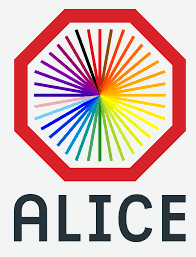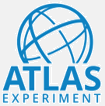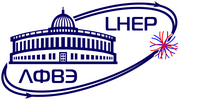
The ALICE is a multi-purpose experiment which is designed to study strongly interacting matter and quark-gluon plasma in nucleus-nucleus collisions at the LHC. The JINR group takes an active part in the analysis of experimental data and physical modeling for studying of the femtoscopic (Bose-Einstein, or due to interaction particles in the final state) correlations and vector mesons production in ultraperipheral nuclear collisions. The group participates in development of thermal model of particle formation in p+p and A+A collisions, it is actively involved in the upgrade of the electromagnetic calorimeter.

The ATLAS experiment is a general-purpose detector for the LHC, whose design was guided by the need to accommodate the wide spectrum of possible physics signatures. The major remit of the ATLAS experiment is the exploration of the TeV mass scale where ground-breaking discoveries are expected. In the focus are the precision test of the Standard Model, investigation of the electroweak processes, study of the Higgs boson production, and searches for BSM physics. The VBLHEP group is involved in the analysis of the Higgs boson production in the SM, in searches for the charged Higgs boson, and in the upgrade of the ATLAS calorimeter.

The “Compact Muon Solenoid” (CMS) is the general-purpose experiment, designed to study physics of pp collisions at the LHC. The prime goals of CMS are exploration of physics at the TeV scale, confirmation of the mechanism of electroweak symmetry breaking through the studies of the Higgs particles, and searches for physics beyond the Standard Model, including supersymmetric partners of the SM particles, dark matter candidates, extra dimensions at TeV-energy scale, etc. The JINR group also makes significant contribution in the upgrade of the CMS detector.

The NA61/SHINE experiment at SPS is aimed at studying the properties of hadron and nuclear fragmentation in processes with hadron and nuclear beams. A searches for a critical point in the phase diagram by scanning the energy and atomic numbers of interacting nuclei is planned. Data analysis continues on the formation of light nuclei, hyperon generation, charm particles and antimatter production in the nucleus-nuclear interactions. Joint simulation work is underway for the NICA and NA61 projects.

The goal of the NA62 experiment at CERN SPS is to measure the very rare decay of the K+ -> pi+ nu nu, which is a decisive test of the Standard Model through measurement with 10% accuracy of the Cabibbo-Kobayashi-Maskawa matrix parameter Vtd. To assess the applicability of the SM, a series of precision measurements of rare modes of leptonic kaon decay will be performed, and a search for the superpartner of Goldstone fermions, the pseudoscalar sgoldstino, is also planned.

The NA64 is a fixed-target experiment at the CERN SPS designed as a hermetic detector to search for Dark Sector physics in missing energy events from electron/positron, muon and hadrons scattering off nuclei. The main focus of the NA64 is Light thermal Dark Matter interacting with the Standard Model via vector (or other) portal, like dark photons (A′) and a variety of New Physics scenarios.
The goal of the STAR project (JINR participation) is to study the properties of nuclear matter at extreme densities and temperatures, to search for signatures of quark deconfinement and possible phase transitions in heavy ion collisions over a wide energy range at the Relativistic Heavy Ion Collider (RHIC). The research program also includes the study of the structure functions of quarks and gluons in collisions of transversely and longitudinally polarized protons.

